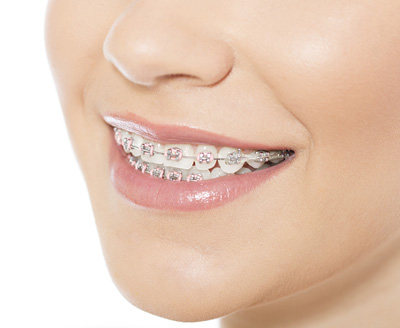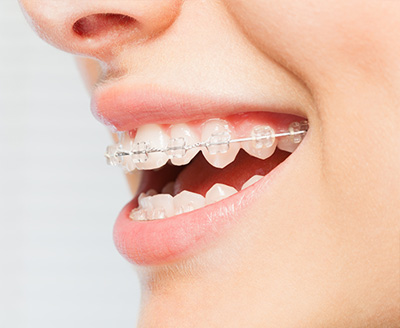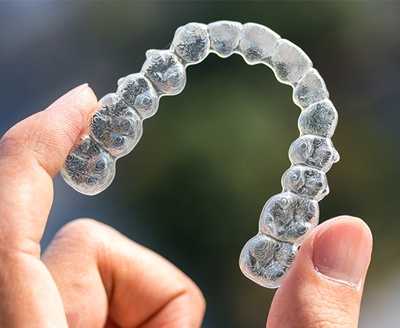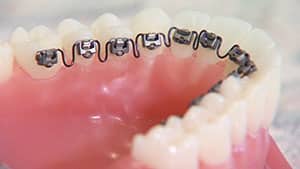Metal Braces
As the classics that still work like a charm, metal braces have come a long way. They’re smaller, sleeker, and seriously comfy nowadays, thanks to high-grade metal alloys. Traditional metal braces work by using brackets and wires to gently guide your teeth into place over time. You can even customize them with colored elastics (rubber bands) for a fun touch and a colorful smile.

Ceramic Braces

Invisalign Aligners
Clear appliances, like Invisalign, use a series of invisible, removable, and comfortable aligners to straighten your teeth. Invisalign is removable, so you are not limited in what you can eat and drink during treatment. Plus, brushing and flossing are less of a hassle, allowing thorough cleaning without navigating around metal brackets or wires. The aligners are comfortable and have no metal to cause mouth abrasions during treatment.

InBrace
InBrace is made to treat issues including spaces crowding, and an unhealthy bite. Hidden behind your teeth, its smart wire effortlessly aligns your teeth according to your personalized treatment plan. It needs no visible wires or trays. The seamless design of InBrace eliminates the discomfort associated with monthly tightening as it works effectively and continuously to achieve the desired results without disrupting your routine.






